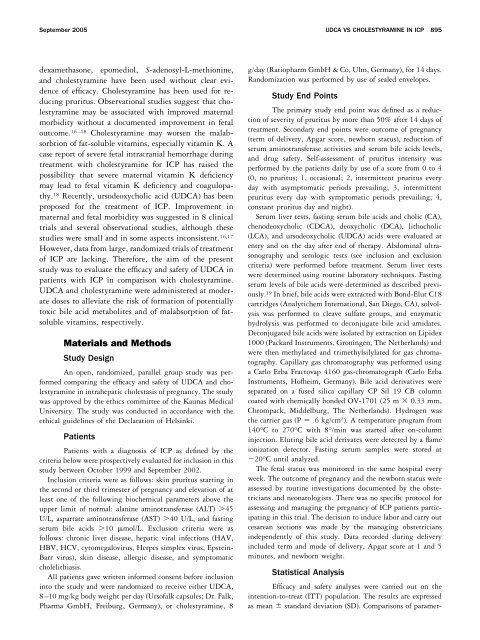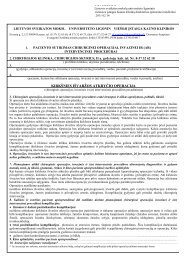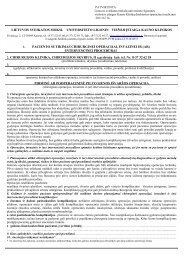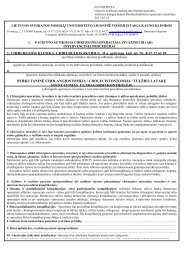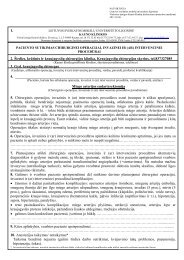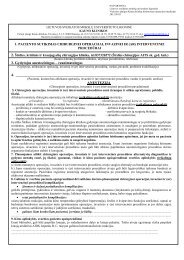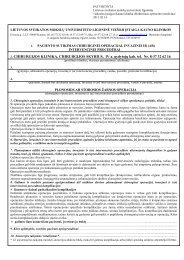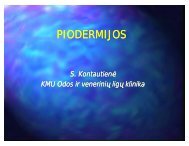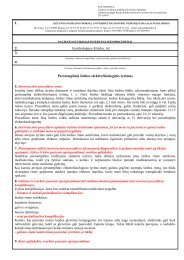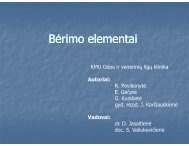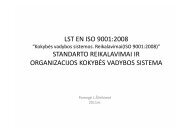Efficacy and Safety of Ursodeoxycholic Acid Versus Cholestyramine ...
Efficacy and Safety of Ursodeoxycholic Acid Versus Cholestyramine ...
Efficacy and Safety of Ursodeoxycholic Acid Versus Cholestyramine ...
- No tags were found...
Create successful ePaper yourself
Turn your PDF publications into a flip-book with our unique Google optimized e-Paper software.
September 2005 UDCA VS CHOLESTYRAMINE IN ICP 895dexamethasone, epomediol, S-adenosyl-L-methionine,<strong>and</strong> cholestyramine have been used without clear evidence<strong>of</strong> efficacy. <strong>Cholestyramine</strong> has been used for reducingpruritus. Observational studies suggest that cholestyraminemay be associated with improved maternalmorbidity without a documented improvement in fetaloutcome. 16–18 <strong>Cholestyramine</strong> may worsen the malabsorbtion<strong>of</strong> fat-soluble vitamins, especially vitamin K. Acase report <strong>of</strong> severe fetal intracranial hemorrhage duringtreatment with cholestyramine for ICP has raised thepossibility that severe maternal vitamin K deficiencymay lead to fetal vitamin K deficiency <strong>and</strong> coagulopathy.18 Recently, ursodeoxycholic acid (UDCA) has beenproposed for the treatment <strong>of</strong> ICP. Improvement inmaternal <strong>and</strong> fetal morbidity was suggested in 8 clinicaltrials <strong>and</strong> several observational studies, although thesestudies were small <strong>and</strong> in some aspects inconsistent. 16,17However, data from large, r<strong>and</strong>omized trials <strong>of</strong> treatment<strong>of</strong> ICP are lacking. Therefore, the aim <strong>of</strong> the presentstudy was to evaluate the efficacy <strong>and</strong> safety <strong>of</strong> UDCA inpatients with ICP in comparison with cholestyramine.UDCA <strong>and</strong> cholestyramine were administered at moderatedoses to alleviate the risk <strong>of</strong> formation <strong>of</strong> potentiallytoxic bile acid metabolites <strong>and</strong> <strong>of</strong> malabsorption <strong>of</strong> fatsolublevitamins, respectively.Materials <strong>and</strong> MethodsStudy DesignAn open, r<strong>and</strong>omized, parallel group study was performedcomparing the efficacy <strong>and</strong> safety <strong>of</strong> UDCA <strong>and</strong> cholestyraminein intrahepatic cholestasis <strong>of</strong> pregnancy. The studywas approved by the ethics committee <strong>of</strong> the Kaunas MedicalUniversity. The study was conducted in accordance with theethical guidelines <strong>of</strong> the Declaration <strong>of</strong> Helsinki.PatientsPatients with a diagnosis <strong>of</strong> ICP as defined by thecriteria below were prospectively evaluated for inclusion in thisstudy between October 1999 <strong>and</strong> September 2002.Inclusion criteria were as follows: skin pruritus starting inthe second or third trimester <strong>of</strong> pregnancy <strong>and</strong> elevation <strong>of</strong> atleast one <strong>of</strong> the following biochemical parameters above theupper limit <strong>of</strong> normal: alanine aminotransferase (ALT) 45U/L, aspartate aminotransferase (AST) 40 U/L, <strong>and</strong> fastingserum bile acids 10 mol/L. Exclusion criteria were asfollows: chronic liver disease, hepatic viral infections (HAV,HBV, HCV, cytomegalovirus, Herpes simplex virus, Epstein-Barr virus), skin disease, allergic disease, <strong>and</strong> symptomaticcholelithiasis.All patients gave written informed consent before inclusioninto the study <strong>and</strong> were r<strong>and</strong>omized to receive either UDCA,8–10 mg/kg body weight per day (Urs<strong>of</strong>alk capsules; Dr. Falk,Pharma GmbH, Freiburg, Germany), or cholestyramine, 8g/day (Ratiopharm GmbH & Co, Ulm, Germany), for 14 days.R<strong>and</strong>omization was performed by use <strong>of</strong> sealed envelopes.Study End PointsThe primary study end point was defined as a reduction<strong>of</strong> severity <strong>of</strong> pruritus by more than 50% after 14 days <strong>of</strong>treatment. Secondary end points were outcome <strong>of</strong> pregnancy(term <strong>of</strong> delivery, Apgar score, newborn status), reduction <strong>of</strong>serum aminotransferase activities <strong>and</strong> serum bile acids levels,<strong>and</strong> drug safety. Self-assessment <strong>of</strong> pruritus intensity wasperformed by the patients daily by use <strong>of</strong> a score from 0 to 4(0, no pruritus; 1, occasional; 2, intermittent pruritus everyday with asymptomatic periods prevailing; 3, intermittentpruritus every day with symptomatic periods prevailing; 4,constant pruritus day <strong>and</strong> night).Serum liver tests, fasting serum bile acids <strong>and</strong> cholic (CA),chenodeoxycholic (CDCA), deoxycholic (DCA), lithocholic(LCA), <strong>and</strong> ursodeoxycholic (UDCA) acids were evaluated atentry <strong>and</strong> on the day after end <strong>of</strong> therapy. Abdominal ultrasonography<strong>and</strong> serologic tests (see inclusion <strong>and</strong> exclusioncriteria) were performed before treatment. Serum liver testswere determined using routine laboratory techniques. Fastingserum levels <strong>of</strong> bile acids were determined as described previously.19 In brief, bile acids were extracted with Bond-Elut C18cartridges (Analytichem International, San Diego, CA), solvolysiswas performed to cleave sulfate groups, <strong>and</strong> enzymatichydrolysis was performed to deconjugate bile acid amidates.Deconjugated bile acids were isolated by extraction on Lipidex1000 (Packard Instruments, Groningen, The Netherl<strong>and</strong>s) <strong>and</strong>were then methylated <strong>and</strong> trimethylsilylated for gas chromatography.Capillary gas chromatography was performed usinga Carlo Erba Fractovap 4160 gas-chromatograph (Carlo ErbaInstruments, H<strong>of</strong>heim, Germany). Bile acid derivatives wereseparated on a fused silica capillary CP Sil 19 CB columncoated with chemically bonded OV-1701 (25 m 0.33 mm,Chrompack, Middelburg, The Netherl<strong>and</strong>s). Hydrogen wasthe carrier gas (P .6 kg/cm 2 ). A temperature program from140°C to 270°C with 8°/min was started after on-columninjection. Eluting bile acid derivates were detected by a flameionization detector. Fasting serum samples were stored at20°C until analyzed.The fetal status was monitored in the same hospital everyweek. The outcome <strong>of</strong> pregnancy <strong>and</strong> the newborn status wereassessed by routine investigations documented by the obstetricians<strong>and</strong> neonatologists. There was no specific protocol forassessing <strong>and</strong> managing the pregnancy <strong>of</strong> ICP patients participatingin this trial. The decision to induce labor <strong>and</strong> carry outcesarean sections was made by the managing obstetriciansindependently <strong>of</strong> this study. Data recorded during deliveryincluded term <strong>and</strong> mode <strong>of</strong> delivery, Apgar score at 1 <strong>and</strong> 5minutes, <strong>and</strong> newborn weight.Statistical Analysis<strong>Efficacy</strong> <strong>and</strong> safety analyses were carried out on theintention-to-treat (ITT) population. The results are expressedas mean st<strong>and</strong>ard deviation (SD). Comparisons <strong>of</strong> paramet-


